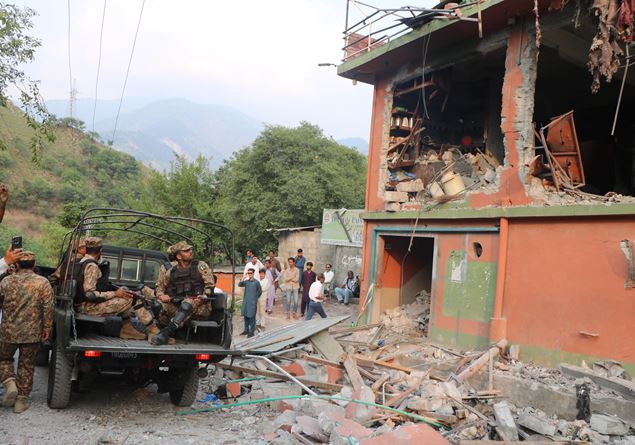The eyes of the world are focused on the Indian subcontinent and on the escalation of the tension between India and Pakistan for the dispute of the Kashmir region. On the two countries they blow twenty of war, with the consequent nuclear threat, after a series of mutual retalities. It all started with the attack of April 22 in Kashmir, where a commando of armed men opened fire on Indian tourists killing 26. The New Delhi government accused an Islamist group, the resistance front – which would be supported by Pakistan, even if the latter denies its support – of being the author of the attack and has undertaken a series of initiatives against Islamabad, in particular, forcing the citizens. Pachistani in India to leave the country. In turn, Pakistan closed the borders with India.
New Delhi has launched a missile offensive – Sindoor operation – to hit terrorist goals, hitting nine infrastructures in the Kashmir controlled by Pakistan and other areas of the country. Last night the fire of the Pakistani artillery on the Indian territory killed 13 civilians and wounded another 59. This was announced by the Indian government, specifying that the victims, as well as 44 of the 59 wounded, were recorded in the village of Poonch (in the north-west of the country), along the “control line”, the fact that separates the contesting region of the Kashmir between the two countries. On the other hand, a note released by Islamabad’s army said that “the Pakistani armed forces have so far reduced 25 Israeli -made Harop drones” launched by the Indian armed forces.
It is the largest, most violent and alarming bag between the two countries of the last twenty years. The Kashmir is a region located between India and Pakistan – the first in large Hindu majority, the second Islamic – and on which both states claim sovereignty, for various reasons. First of all, it is a very important region from the point of view of water resources, and then it is crucial from a strategic and geopolitical point of view as it gives access to the Himalaya chain. The dispute on this region was born in 1947, when the former colony of British India obtained independence, which led to the birth of two states, divided sieving religious base, but without finding a solution for the Kashmir, which was inhabited mainly by Muslims but was governed by a Hindu sovereign. In 1949 the first war between India and Pakistan led to the division of the Kashmir into two parts, one controlled by India the other by Pakistan, separated by a control line, not recognized internationally. To further complicate the situation, the fact that the western part of the region is controlled by China.
In addition to the Kashmir dispute – which led to different wars, after that of 1947-48, in 1965, 1971 and 1999 – Between New Delhi and Islamabad there are different and long -standing reasons of friction and tension, including the fact that India accuses the neighbor of financing terrorist groups, also the religious division and the different positioning of the two countries at a geopolitical level: India is linked to Russia by historical political-commercial bonds, which have strengthened with the war in Ukraine and the insulation of Moscow by the West through the sanctions, which New Delhi refused to impose. The Indian premier Narendra Modi in 2024 met Putin in Moscow twice and, while declaring himself in favor of peace, It has neither condemned nor supported the Russian invasion of Ukraine. Pakistan, for its part, is a historian, strong ally of the United States in the Asian region, In particular in the struggle of the USA to terrorism. Then there is the role of China, which is ally of Islamabad and supports Pakistan both on a political-diplomatic and military level.
At the moment it does not seem that the two countries have a real interest in widening the conflict. But to make the international community tremble is The danger represented by the fact that both nations are nuclear powers, India holds about 160 nuclear newspapers, Pakistan about 170, And both countries are investing a lot on the rearmament and advancement of their arsenals. A nuclear war would have human, climatic, environmental, economic, catastrophic consequences not only in the region of conflict but all over the world.
(Photo Ansa: Bilal’s mosque in Muzaffarabad in the part of the Kashmir controlled by Pakistan affected by a missile launched by India)


